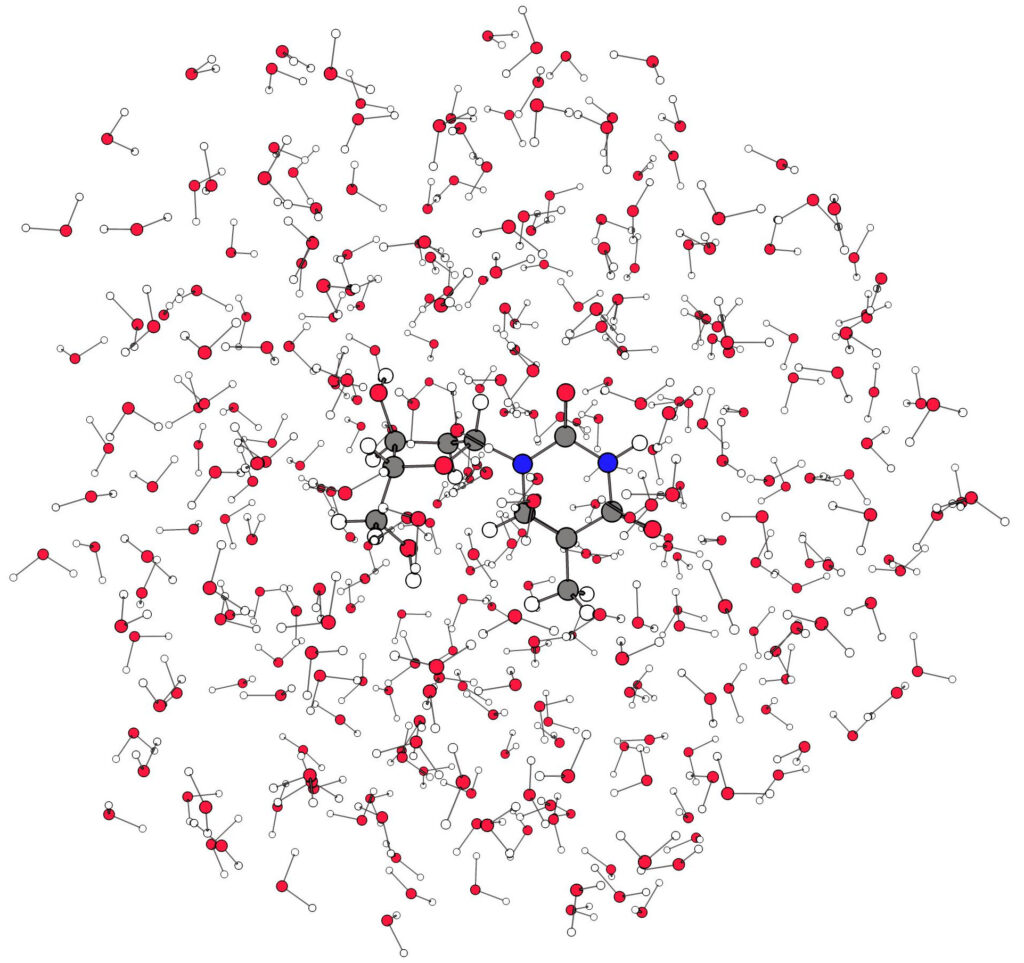D. Moscato, G. Mandelli, M. Bondanza, F. Lipparini, R. Conte, B. Mennucci, M. Ceotto
J. Am. Chem. Soc. 2024, 146, 12, 8179–8188

We introduce a quantum mechanics/molecular mechanics semiclassical method for studying the solvation process of molecules in water at the nuclear quantum mechanical level with atomistic detail. We employ it in vibrational spectroscopy calculations because this is a tool that is very sensitive to the molecular environment. Specifically, we look at the vibrational spectroscopy of thymidine in liquid water. We find that the C═O frequency red shift and the C═C frequency blue shift, experienced by thymidyne upon solvation, are mainly due to reciprocal polarization effects, that the molecule and the water solvent exert on each other, and nuclear zero-point energy effects. In general, this work provides an accurate and practical tool to study quantum vibrational spectroscopy in solution and condensed phase, incorporating high-level and computationally affordable descriptions of both electronic and nuclear problems